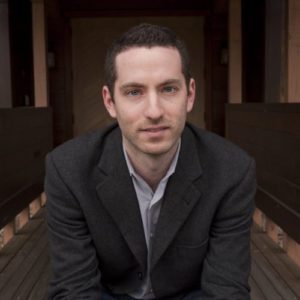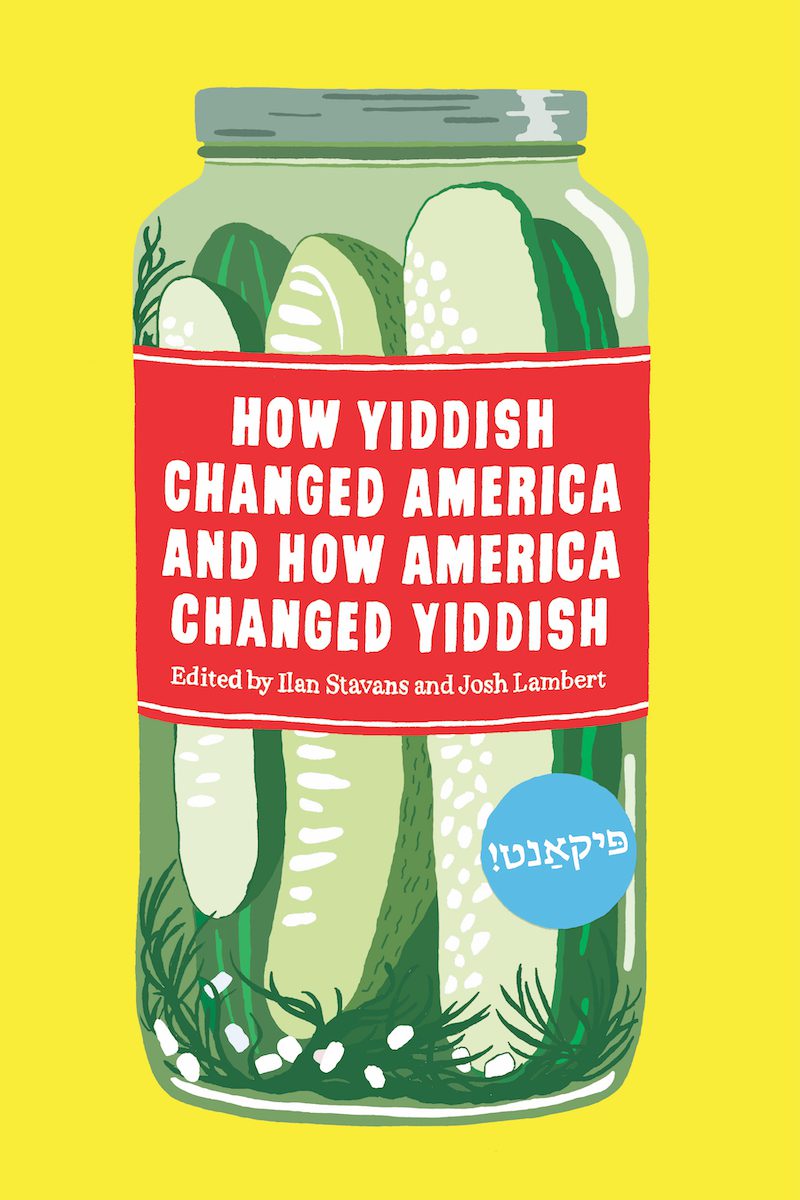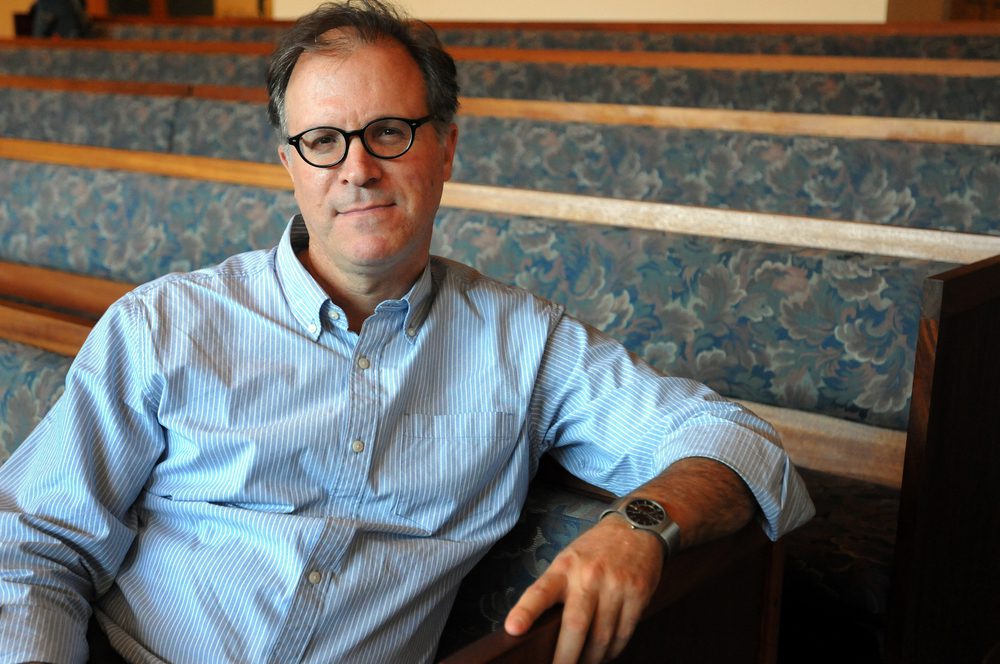
If you live in America, chances are you know some Yiddish—even if you think you don’t. You know it if you’ve eaten a bagel or a matzo ball, if you’ve ever said shmuck or schmo or glitch or shlep.
My late grandma Norma, whose parents immigrated to the Bronx from Russia, used to call me shayna punim (essentially, “pretty face”). She was fluent in Yiddish, or at least that’s what my dad tells me. I didn’t actually know until I asked him about it a few days ago, while reflecting on the new anthology, How Yiddish Changed America and How America Changed Yiddish, edited by Josh Lambert and Ilan Stavans. The book includes a wide range of texts—poems, stories, memoir, essays, songs, recipes, parodies, plays, letters, speeches, comics, and more—that paint a picture of the American Yiddish culture of which my grandma was a part; a culture founded on survival, assimilation, resilience, but also irreverence, playfulness, seduction, style. The language’s legacy lives on, not only in its four hundred thousand speakers, but in Hollywood and literature, food and popular culture, and in the English language itself.
In addition to serving as the academic director of the Yiddish Book Center in Amherst, MA, Josh Lambert is the author of Unclean Lips: Obscenity, Jews, and American Culture. Next fall, he will take over as Director of Jewish Studies at Wellesley College.
Recently, I connected with Josh and we discussed putting together the anthology, themes in American Yiddish literature and culture, and the future of Yiddish in America.
***
The Rumpus: This book is incredibly diverse and wide-ranging. I know lots of this was drawn from the archives of the Yiddish Book Center, but can you talk a little bit more about how you and Ilan went about collecting, curating, and ordering this book?
Josh Lambert: Ilan had been working with the Yiddish Book Center to plan celebrations of its fortieth anniversary (which is this year, 2020), and he came up with the idea for a book, and the title, too. When I was asked to co-edit, I suggested that especially since we didn’t have a huge amount of time, we couldn’t really explore all the nooks and crannies of American Yiddish culture, which is massive (dozens of newspapers, hundreds of magazines, and so on) to find hidden gems; instead, I suggested we start with Pakn Treger, the English-language magazine the Yiddish Book Center has published throughout its history. Its editors and contributors over the decades have done some amazing work digging through Yiddish culture and presenting it to English-speaking audiences, and the truth is that since the magazine goes out only to members of the Yiddish Book Center, many people who might be interested have never seen a copy of it nor anything that’s been published within it.
Once we had combed through the back issues and picked out dozens of pieces for the book, we looked at what we had and tried to figure out what was missing, and filled it out with favorite pieces we knew about from elsewhere (an example is the Yiddish version of the Sophie Tucker song in here, which a friend of mine once asked me to translate for her, and which has always been a favorite of mine). We knew all along that this couldn’t possibly be comprehensive or exhaustive, so we were aiming for an entertaining smorgasbord.
Rumpus: In the first section of the book, Politics and Possibility, the anthology makes clear the association of Yiddish speakers with (often radical) leftist politics, particularly in the Lower East Side of New York during the first half of the twentieth century. There’s a speech by Emma Goldman against marriage as private possession, a letter detailing the community’s acceptance of a Jewish woman’s transition in 1936, and poems and essays about labor unions and the Triangle Shirtwaist Factory fire. My question is: Why did this association come about? Relatedly, why the rightward turn, broadly speaking, over the past seventy-five years or so? And how is the legacy of Jewish leftist politics being carried out today? Does it have anything to do with the study of Yiddish?
Lambert: The association of Jews with the political left in the late nineteenth and early twentieth centuries is a complex and crucial piece of history, and I can’t do it justice in a couple of sentences (and I’d generally refer you to Tony Michels, and especially in his book A Fire in Their Hearts). But in short, my sense of it is that over the course of the nineteenth century, most Jews in Europe had faced steadily worsening conditions, increasing poverty, and had no hope of assistance from their governments. Many of the intellectuals among them were, for that reason, attracted to big, transformative political ideas like Socialism and Communism, that promised to change the social order in a profound way—and many of the Jews who felt that way were eager to get away from the oppressive government of Tsarist Russia, and get to a place, like the US, where they could pursue their political ideas. The labor conditions in New York weren’t great when they arrived, and Jews, for linguistic and other reasons, were very concentrated, so they were a fertile ground for political organizing. That’s at least part of an answer as to why Yiddish-speaking Jews were so influential in leftist politics of different kinds.
The turn to the right: well, that’s complicated, too. Depending on how you measure, there hasn’t been a turn to the right: statisticians say that seventy percent or more of American Jews have voted Democratic in almost all American elections for the last century (with a few exceptions, but no recent ones). But all kinds of changes happened over the twentieth century that one would expect to have profound effects on the politics of American Jews: Jews got their own state, in Israel; American Jews’ socioeconomic positions rose wildly; the US brutally cracked down on unions, organized labor, and anything or anyone with a real or imagined link to Communism; a large number of ultra-Orthodox Jewish communities settled in the US and flourished; and so on.
The easiest part of your question to answer is the last one. I can’t say for certain why there’s been so much leftist activism among younger American Jews, but it’s been clear to me for more than a decade that one of the reasons a nineteen-year-old or twenty-two-year-old American might want to study Yiddish and hang out in Yiddishist circles (or even come to one of the programs I direct at the Yiddish Book Center) is if they’re looking for a way to root their leftist activism to something concretely Jewish, so that no matter what their politics might be (some I’ve met are activists for LGBTQ rights, or activists against the Israeli occupation of the West Bank), no one can tell them they’re not “Jewish enough” or that their politics are somehow in opposition to Jewish tradition (which, if they’re anti-Zionists, their teachers or communities might indeed want to tell them). As far as I can tell, many of them do end up finding in Yiddish language, literature, and culture both inspiration and a source of strength for their activism. That’s not the only dynamic drawing students into Yiddish these days, but it’s one of the most powerful ones.
Rumpus: It makes sense then that the literature of early American Yiddish writing is remarkably progressive and—to many of the time—“obscene.” I’m thinking here, for instance, of Sholem Asch’s The God of Vengeance, which, as you write, represented Jews involved in prostitution and the first depiction of a female same-sex kiss on stage, in 1923. One of the arguments in your book Unclean Lips is that American Yiddish literary modernism “presaged the situation of American literature in English to the present.” Can you discuss that argument and how it might relate to the work presented in this anthology?
Lambert: In short, what I found in my research was that in the early twentieth century, the US state institutions that were being used to censor or control the representation of sexuality in English-language materials (e.g. the post office, customs, police), were simply not all that interested in policing such representations when they took place in Yiddish. Probably because it would have been a big pain to hire a whole office full of Yiddish-speaking censors (though the Soviets of course did that). This didn’t mean it was a free-for-all for Yiddish in the US; it meant that the decisions about what was too gross or weird or explicit were handled by people like newspaper and magazine editors, rather than by post office and custom officials. After about 1966, the same became true in English: it was still possible that a novel would get suppressed because it was too extreme in the way it represented sex, but it was more likely going to be an editor at a publishing house, or a literary critic, or regular readers who were the ones suppressing it, and not a functionary or bureaucrat at the post office.
The God of Vengeance is a case in point: it’s not that all its audiences liked it. Some hated it, thought it was blasphemous and disgusting. But some critics thought it was brilliant. In the Yiddish-language culture sphere in America, those disagreements could happen without the cops getting involved.
Rumpus: Speaking of The God of Vengeance, not only is there an excerpt in the anthology but also a parody of it. This happens a few times in the book. Why was it so important to include these source texts and these parodies?
Lambert: Well, it’s hard not to like that disputative, dialogic aspect of modern Jewish culture, that’s always arguing with itself. It’s a cliche of sorts—two Jews, three opinions, etc.—but that parody jumped out when we were flipping through the back issues of Pakn Treger, and seemed like too much fun not to include it.
Rumpus: I think a lot of readers will be pleased to find a section in this anthology devoted to food. What interested me in particular was the way market forces ushered “Jewish” foods into the mainstream, while, in doing so, substantiating Yiddish as an official language of sorts, to be used by American companies selling, say, Crisco, to Jewish housewives. It seems to me that these moves signaled both the increasing assimilation of Jews (and the Yiddish language) into American culture, at the very same time that it made distinctly “Jewish” foods (and the Yiddish language) more visible. Do you have any thoughts on this dichotomy between assimilation and visibility?
Lambert: I tend to be open-minded about what the effects of a particular set of decisions about language and culture will be; it’s easy in hindsight to say something led to something else, but that doesn’t mean it had to. It might seem like having advertisements for Rice Krispies and Crisco in Yiddish, would, by drawing Yiddish-speaking Jews into the American market, work to assimilate them, but I’m not sure that’s inevitable. It’s really hard for me to say what it means that a few Jewish foods really entered the American culinary lexicon, except that those are foods that worked for enough Americans to be profitable. But whether companies advertising in Yiddish had an impact, I’m not sure; for quite a while now there have been machines in the New York subway system that let you buy your MetroCard in Yiddish. Is that really going to make any difference in the way that Yiddish-speaking Hasidic Jews use the subway, or think about themselves? Maybe? But probably not?
Rumpus: There’s untranslated work here, too—an entire section of the anthology is devoted to the children of Yiddish speakers, including such writers as Grace Paley, Michael Chabon, and Allen Ginsberg. Aside from Liana Fink, though, these writers are either dead or older. In this respect, what might the future look like for Yiddish literature? Has it assimilated fully into Jewish American literature?
Lambert: So, for one thing, there are actually plenty of younger children-of-Yiddish-speakers, many of them native Yiddish speakers, too, who we didn’t include in the book (for no particular reason I can think of) but who are writing in English now, and who are worth thinking about: the memoirist Shulem Deen, for example, and the novelist Pearl Abraham. The difference, I suppose, is that their parents were ultra-Orthodox Yiddish speakers, whereas Paley’s and Ginsberg’s parents were mostly secular.
There’s also some fascinating contemporary literary writing being done right now in Yiddish, by writers who are mostly not being translated into English (unless they’re translating themselves) and aren’t getting much attention. I know of a few translators who are trying to publish work by Mikhoel Felsenbaum and Boris Sandler in English, for example.
But in terms of the legacy of Yiddish writing, I catch moments all the time in the work of contemporary Jewish writers where they’re more or less explicitly alluding to or connecting with Yiddish writers of previous generations. I liked Kenneth Bonert’s novel The Lion Seeker, about twentieth-century South Africa, and when he describes a pogrom it felt clear, to me at least, that he had been reading L. Shapiro’s pogrom stories. I don’t think there’s an “essence” of modern Yiddish literature that somehow lives on—there are so many writers, doing so many different things, and any one of them can become a touchstone for a contemporary writers (or filmmaker, or graphic novelist, or whatever).
Rumpus: The book’s final section incorporates Yiddish writers writing in Cuba, Argentina, Mexico, and Canada. The final piece—“Camacho’s Wedding Feast” by the Argentine writer Alberto Gerchunoff—even mirrors the anthology’s opening, “A Ghetto Wedding” by Abraham Cahan (a New Yorker). Why was it so important to include writers from outside the US? And why start and end with these stories of troubled, but ultimately happy, weddings, set in two different countries?
Lambert: It was pretty late in the process that we realized it was a book with America in its title (twice), being edited by a Canadian (me) and a Mexican (Ilan). Ilan’s done some incredible and important work promoting Jewish Latin American writing in general, and it would have felt a little ridiculous to exclude entirely other American locales that played such important roles in the history of Yiddish (Montreal and Buenos Aires were both major centers of Yiddish publishing, for example).
As for the two pieces you mention, I guess that while we don’t want to be too nostalgic about the history of Yiddish-speaking people, we did want to find moments that showed their resilience and humanity, and those stories—set very far apart, geographically, but among people who might’ve been cousins and come from the same towns in Eastern Europe—work well as bookends for that reason.
Rumpus: Lastly, what are your favorite pieces from the anthology? Anything you wanted in there that you couldn’t make room for? Who’s an unsung Yiddish writer more people should be reading, and why?
Lambert: There’s so much in there that I love, but what jumps to mind are the cartoons by William Gropper, which I’ve been thinking about a lot lately—there’s something about the way that he could convey the depths of injustice and corruption with his style in a way that few contemporary cartoonists can equal.
As I said above, there’s a vast treasure trove of material we couldn’t include—some of it because it wouldn’t fit or we didn’t have the rights, much of it because it hasn’t been translated yet. There’s nothing in the book by I. J. Singer (Isaac Bashevis Singer’s older brother), and that’s really too bad—but some of his best relevant work is in long, episodic novels like the The Family Karnovski.
And well, it’s awful to have to say it, but this book is being published at a moment of what seems like increasingly frequent violent attacks on Jews in America. I’ve always loved, and been deeply distressed by, L. Shapiro’s stories about pogroms—they’re as intense, detailed, and rich literary works about human depravity as I can imagine, and, unfortunately, they feel more relevant now than at any time in my life.
***
Photograph of Josh Lambert by Michael Grinley. Photograph of Ilan Stavans by Kevin Gutting.






